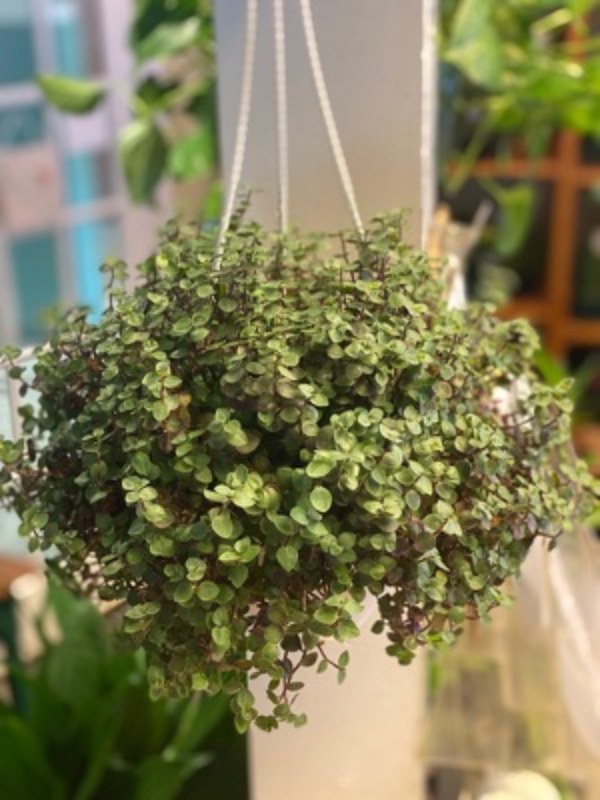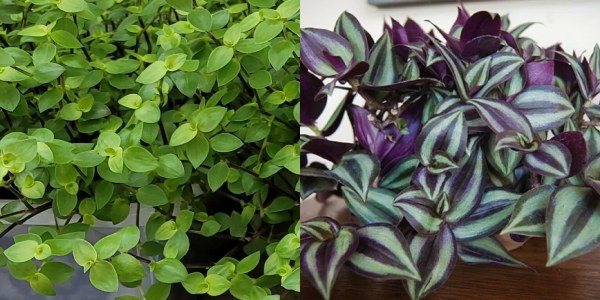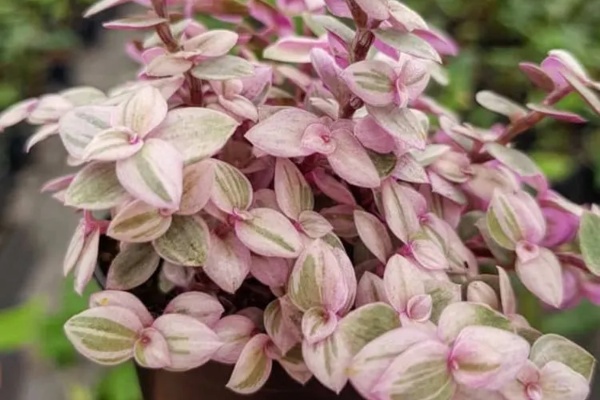Bolivian Jew is a versatile perennial plant popular for its attractive trailing vines and colorful foliage. It is commonly cultivated as an ornamental addition to indoor space. This plant not only enhances aesthetic appeal but also contributes to purifying indoor air by filtering out specific toxins and pollutants, thereby fostering a healthier indoor environment.
This article will explore more about Bolivian Jew plants, uncovering insights into their growth and care requirements.
Overview
Plant Type: Perennial Plant
Season: Spring, Summer, and Early Fall
Family: Commelinaceae
Genus: Callisia
Species: Callisia repens
Native Area: Bolivia, South America
Understanding Bolivian Jew Plant: Characteristics and Growth

Bolivian Jew, Scientifically named Callisia repens, is a unique and captivating plant, originating from the tropical regions of South America, particularly Bolivia. However, the plant has now become popular worldwide for both outdoor gardens and indoor spaces.
It is also popular for its low-maintenance nature and ability to thrive in various conditions, adding beauty to landscapes, hanging baskets, and terrariums. This plant is characterized by its small, oval-shaped leaves arranged in a rosette pattern.
It comes in various shades including green, purple, and silver. These leaves gently wrap around a dark vine, which can grow up to two feet long. Similarly, the cascading growth habit makes the plant perfect for hanging baskets or as ground cover in your indoor garden.
Bolivian Jew Plant: Tips for Indoor Care
Growing Bolivian Jew indoors requires proper care and cultivation. Fortunately, the Bolivian
Light
For your Bolivian Jew plant, choose a spot with bright, indirect sunlight. These plants love bright, indirect light, so put them close to a window where they get filtered sunlight, not direct sun. Good light helps them grow well and keeps their leaves colorful and healthy.
Soil and Water
Choose well-draining soil with perlite or sand to prevent root rot. Water when the top inch of soil is dry, and use pots with drainage holes to avoid waterlogging. Similarly, you may let the soil dry between waterings, keeping it slightly moist.
Temperature and Humidity
Keep your room temperature steady at 65-75°F (15-24°C). Avoid putting the plant near drafty windows or vents. Bolivian Jew plants like moderate to high humidity. Consider spritzing the leaves sometimes or using a humidity tray nearby to keep the air moist.
Fertilizing
During the growing season in spring and summer, give your Bolivian Jew plant a balanced liquid fertilizer diluted to half strength every month. You can either stop fertilizing or reduce it during the dormant period in fall and winter.

Pruning and Repotting
Regularly prune leggy growth to promote bushier plants and maintain their shape. Also, remove any yellowing or dead leaves to keep the plant neat. Further, repot your plant every 1-2 years or when it gets too big for its pot. Use well-draining soil and pots with drainage holes.
Pest Control
Regularly inspect your Bolivian Jew plant for common pests like spider mites and mealybugs. If you see any, use insecticidal soap or neem oil to get rid of them quickly.
Propagation Bolivian Jew Plant: Methods and Techniques
You can easily make new Bolivian Jew plants from stem cuttings. Just cut a healthy stem, remove the bottom leaves, and put it in water or moist soil. Keep it wet until roots grow. Also, ensure they are placed in indirect light for optimal growth.
Comparing the Bolivian Jew Plant and Wandering Jew Plant
Bolivian Jew and Wandering Jew, scientifically known as Tradescantia zebrina or Tradescantia pallida, plants each bring their own distinct charm to indoor and outdoor settings, thanks to their unique features such as vibrant foliage and trailing growth habits. Here are the key differences between these two popular choices that may vary in terms of appearance, growth habits, and care requirements.
Appearance: The Bolivian Jew Plant has small, oval-shaped leaves that are often a mix of green, purple, and silver shades. On the other hand, the Wandering Jew Plant has long leaves with purple and green stripes, making it visually striking. Bolivian leaves grow down with their vines hanging while the leaves of the Wandering Jew leaves grow along creeping stems, spreading out as they grow.
Hardiness: Bolivian tends to be hardier and more adaptable to various growing conditions, including indoor environments. The Wandering is also a resilient plant but needs more consistent moisture and warmer temperatures to thrive.

Growing Conditions: Bolivian thrives in bright, indirect sunlight and prefers moderate to high humidity. Similarly, it requires well-draining soil and should be watered when the top inch of soil feels dry. In contrast, Tradescantia also prefers bright, indirect light but can tolerate lower light conditions. It requires consistently moist soil and benefits from occasional misting to maintain humidity.
Propagation: Callisia and Wandering both easily propagated from stem cuttings. Simply cut a healthy stem below a node, remove the lower leaves, and place it in water or moist soil to root.
Common Uses: Bolivian is often grown as a ground cover, in hanging baskets, or as a trailing accent in containers for its ornamental beauty. Meanwhile, the Wandering Jew plant is widely popular as a decorative houseplant, hanging basket plant, or ground cover in warmer climates and is also popular in landscaping for its colorful foliage.
Toxicity: Although Bolivian is generally non-toxic to humans and pets, eating it might cause mild stomach discomfort. The Wandering plant, on the other hand, is mildly toxic to cats and dogs, potentially causing symptoms like vomiting and diarrhea if ingested.
Also read, Growing Oregano in Your Indoor or Outdoor Herb Garden: A Complete Guide
Frequently Asked Questions
1. How much light does a Bolivian Jew Plant need?
These plants love bright, indirect light, so put them close to a window where they get filtered sunlight, not direct sun.
2. Is Bolivian Jew an indoor plant?
Yes, Bolivian Jew is commonly cultivated as an ornamental addition to indoor space.
3. How can I encourage bushier growth in my Bolivian Jew plant?
Regularly prune leggy growth to promote bushier plants and maintain their shape.
4. Are Bolivian Jew plants toxic?
No, the Bolivian Jew plant is generally non-toxic to humans and pets, but eating it might cause mild stomach discomfort.
5. How do the appearances of Bolivian Jews and Wandering Jews differ?
The Bolivian Jew Plant has small, oval-shaped leaves that are often a mix of green, purple, and silver shades. On the other hand, the Wandering Jew Plant has long leaves with purple and green stripes, making it visually striking.
